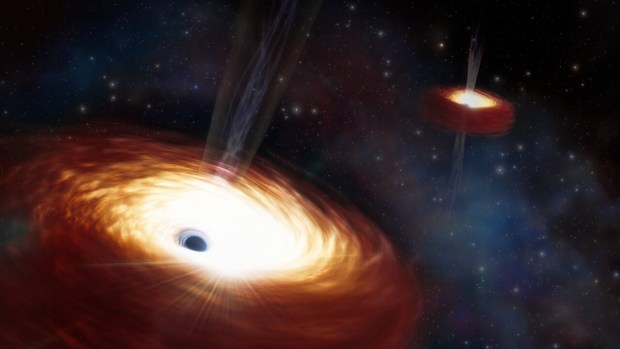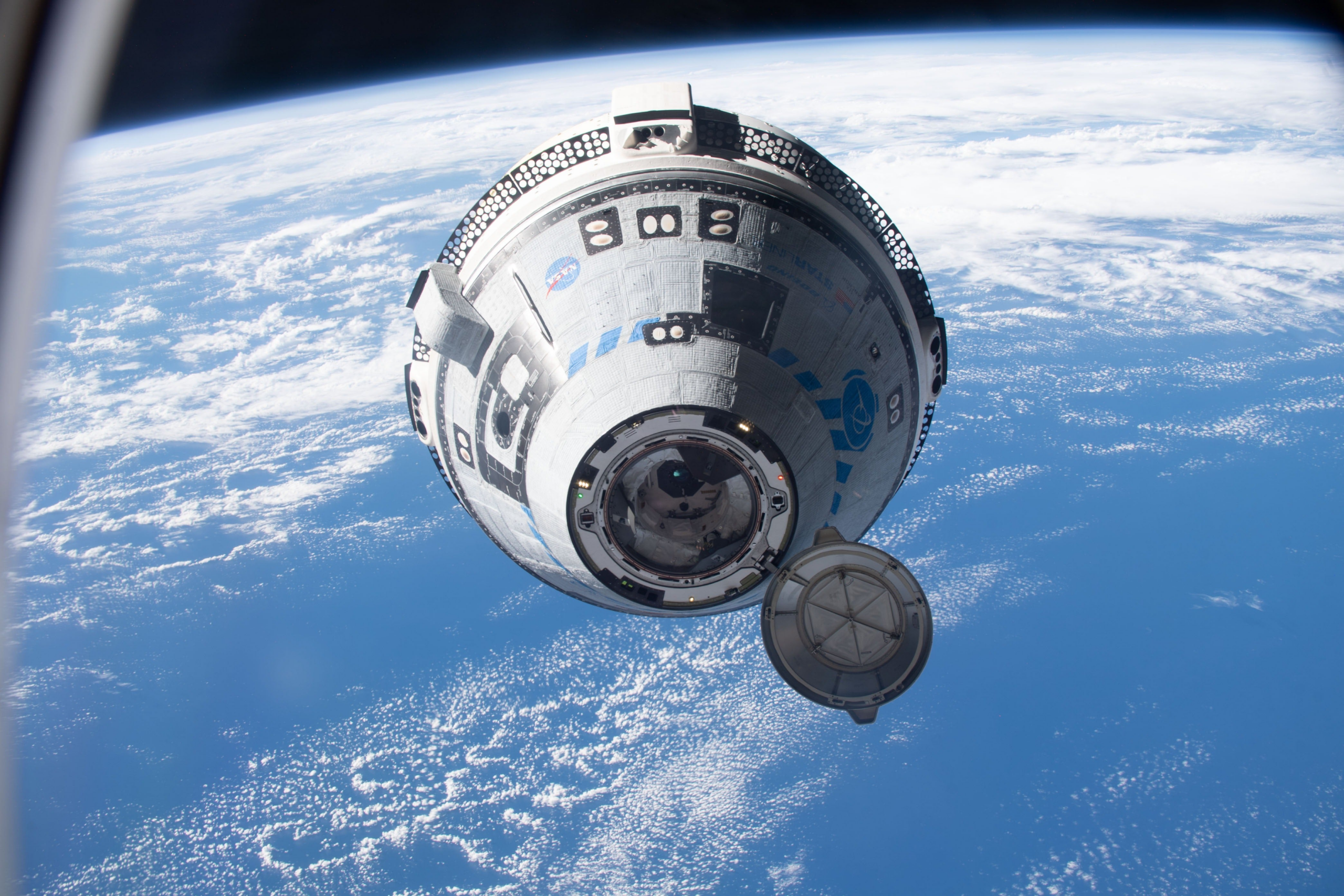A recent study provides insight into what might stop supermassive black holes from merging.

An artist’s conception of the pair of supermassive black holes. Credit: NOIRLab/NSF/AURA/J. daSilva/M. Zamani
Two supermassive black holes — comprising a binary system — are locked in a chicken fight so intense that it has come to a standstill. And rather than merging, this fight has dragged on for over three billion years. The black hole binary system lies in the center of the elliptical, radio galaxy called 4C +37.11 (or B2 0402+379) and resides about 750 million light-years away from Earth.
A team of astronomers recently published a paper in the Astrophysical Journal, providing their calculated mass, clocking in at several billion times the mass of the Sun, and some insight as to what can be stopping supermassive black holes from merging, even when they’re just a hair away (on the cosmic scale).
Just a little closer
This question has vexed astronomers for so long that it has its own name: the final-parsec problem. When gravity is powerful enough to merge two galaxies, the supermassive black holes become a binary pair at the center of the newly formed galaxy. But once they draw to a closer range of just a few parsecs (which is about 3.3 light-years) the process halts and the black holes remain at this cozy distance.
The combined mass of the two black holes at the center of 4C +37.11 is extremely massive, weighing in at 28 billion solar masses. This automatically qualifies them as being the heaviest black hole binary ever found. In comparison, the supermassive black hole at the center of our Milky Way galaxy (Sgr A*), is about 4.3 million solar masses. And to top that off, the behemoth pair is spaced only 24 light-years apart.
The team used the International Gemini Observatory’s Gemini Multi-Object Spectrograph (GMOS) data archive to measure the binary’s mass. By analyzing the speed of the stars and how they speed up as they approach the binary, they were able to infer the total mass, according to Roger Romani, a Stanford University physics professor and co-author of the paper.
After a merger
“Following a galactic merger, the two central black holes will interact with stars/gas that take away some of their kinetic energy, causing them to spiral towards a common center. This is called dynamical friction,” says Tirth Surti, Stanford University undergraduate and lead author of the study. “As they scour their vicinity of stars and gas and occupy smaller and smaller volumes due to their shrinking separation, the black holes interact with fewer and fewer stars, so the efficiency of this process decreases.”
In other words, the binary’s surrounding material becomes scarce. And like most systems, they need the food and nutrition to continue their growth. This often happens when the black holes are far apart just enough, that they can’t fully complete a merger through gravitational wave radiation, says Surti. Hence, the final-parsec problem.
What astronomers don’t yet know is how and when supermassive black holes stall in their mergers, and whether the stalling phase for this galaxy is a permanent problem or a very long setback. “Normally it seems that galaxies with lighter black hole pairs have enough stars and mass to drive the two together quickly [but] since this pair is so heavy, it [requires] lots of stars and gas to get the job done,” said Romani in a press release. Researchers believe that the merging act can be completed if the binary were to merge with a third galaxy, hopefully replenishing the central vicinity.
“We’re looking forward to follow-up investigations of B2 0402+379’s core where we’ll look at how much gas is present,” Surti says. “This should give us more insight into whether the supermassive black holes can eventually merge or if they will stay stranded as a binary.”



